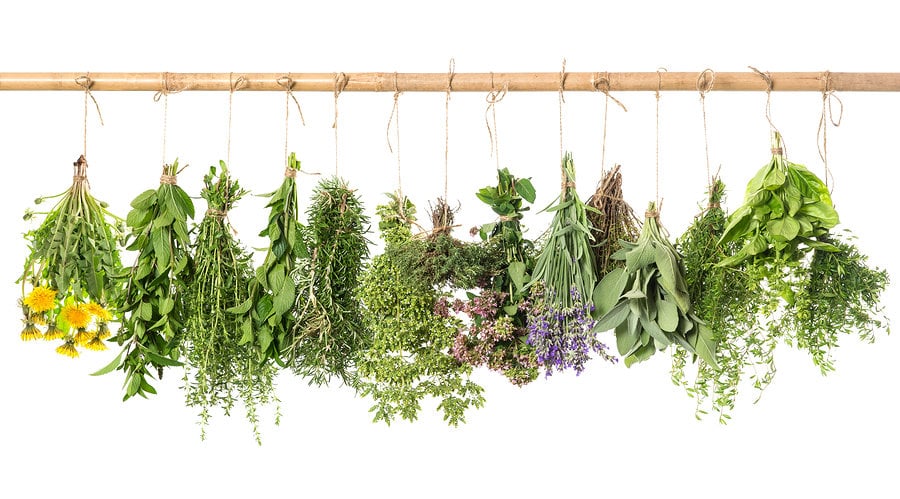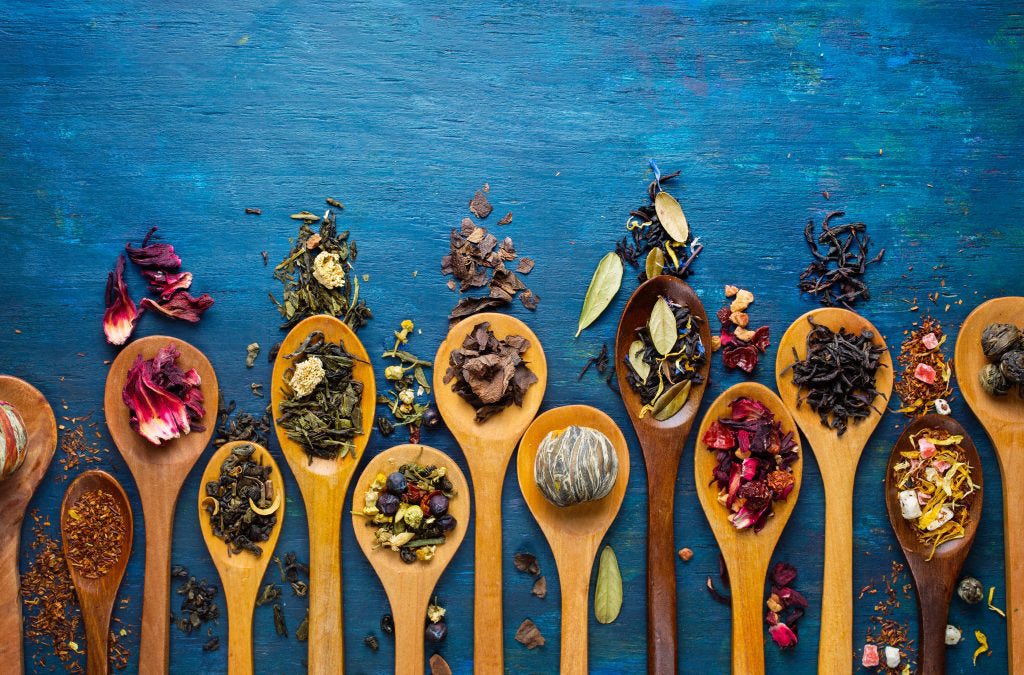It’s January, the coldest month of the year here in North America and many of us are warming up by sipping hot beverages. No wonder January is National Tea Month! I thought it would be a good time to weigh in on the reasons why here at Teeccino, we’re devoted to bringing the wellness benefits of herbs to your cup by providing pleasurable yet functional herbal teas.
A little history of herbal teas
Every ancient culture has developed the use of herbs for medicinal purposes. Many of our modern pharmaceuticals are developed from compounds science has discovered in plants based on the lore from the way our ancestors used them to make teas that fought off illness.
 Europeans have a long tradition of drinking herbal teas for various ailments and their herbal tradition, known as Western Herbal Medicine, dates back thousands of years. The Greek doctor, Galen, who was a physician, surgeon and philosopher in the Roman empire during the 3rd century, made the first herbal blends designed for their health benefits – a subject so near and dear to my heart that I named my son after him.
Europeans have a long tradition of drinking herbal teas for various ailments and their herbal tradition, known as Western Herbal Medicine, dates back thousands of years. The Greek doctor, Galen, who was a physician, surgeon and philosopher in the Roman empire during the 3rd century, made the first herbal blends designed for their health benefits – a subject so near and dear to my heart that I named my son after him.
In Asia, the earliest medical writings on herbs dating back over 3,000 years describe their use for healing remedies. Traditional Chinese Medicine evolved from these early classics. The same goes for the evolution of Ayurvedic herbal medicine in India. From the 6th century BC to the 7th century AD, the earliest writings recorded in the Vedic scriptures and medical treatises continued to develop the use of herbal remedies based on a unique philosophical analysis of the human body.
Here in the Americas, Native Americans drank numerous teas made from indigenous herbs for their medicinal properties. When Europeans arrived here, they learned from Native Americans about the uses of the New World’s herbs. European settlers also brought with them their own essential herbs and many spread wild in this new habitat.
Infusing herbs in hot water to make tea is a tradition that crosses over all geographic boundaries. It is a fast and highly effective way to extract the wellness properties from herbs, whether leaf, bark, root or flower, and make them available for immediate absorption by the body. Hot infusions open up the pores of the herbs and the water-soluble compounds become suspended in the liquid.
The launch of herbal teas in the United States
When herbal teas were first introduced in the early 1970’s to natural food and grocery stores in the US, tea drinkers complained that herbal tea wasn’t really tea at all. Herbal tea doesn’t contain Camellia sinensis, the caffeine-containing plant known as “tea” from which we get black tea, green tea, oolong tea, white tea, matcha and many other varieties of tea depending on where the tea is grown and how the leaf is fermented and dried.
British tea connoisseurs think that herbal tea should be called an “infusion” while the French call herbal tea a “tisane”. But Americans are more practical. If it brews and looks like tea, but it’s caffeine-free and made from herbs, it’s simply called “herbal tea”.
These days, many people don’t realize that there is no tea in herbal tea!

Macronutrients vs micronutrients
We all know to eat a well-balanced diet including lots of fruits and vegetables to get our macro-nutrients like Vitamin B, C, E and A, along with the minerals our bodies require to thrive. We don’t look to herbal teas to make a significant contribution of macro-nutrients to our diet. After all, we are only infusing a tablespoon of herbs in a cup of water.
However, herbal teas do contain micro-nutrients, often called “phytonutrients” or “phytochemicals” (phyto means plant in Greek), that contribute to human health in a myriad of ways. Science is just beginning to understand what our ancestors have known for millennia.
You can think of a cup of herbal tea as a phytochemical cocktail. This humble yet aromatic cup with its soothing warmth is filled with compounds from plants that gently modulate and support your health. All the water-soluble components in the herbs are released in the fragrant brew and then immediately absorbed by your body upon consumption.
Antioxidants, also known as polyphenols, immunomodulating polysaccharides, oligosaccharides, flavonoids, terpenes, phytosterols, alkaloids ~ all of these families of phytochemicals found in herbal teas expand to encompass thousands of compounds each. Plant chemistry is complex!

Herbs keep you wild and thriving
Let’s make it simple. Our ancestors ate a much wider array of plant foods than we eat today. Our common fruit and vegetables have been selectively cultivated for visual appeal and shelf life, but not for nutrients.
Herbs bring us a vast array of phytonutrients that we are missing in our modern diets. Herbs provide our bodies with micro, yet essential, nutrients to support our immune systems, reactivate our antioxidants, stimulate our digestion, and calm our stress. These are the real health benefits in a delicious cup of herbal tea.
Many herbs still are harvested in the wild. It is their very wildness, with their struggle to grow in poor soils and harsh environments, that creates high levels of protective phytochemicals. In comparison, those same herbs grown commercially, even organically, typically don’t have as high a level of phytochemicals as their wild cousins.
Phytochemicals from herbs talk to our genes
The interaction of these phytochemicals with our genes is called epigenetics, which encompasses the changes in the expression of our genes stimulated by external factors. The best way to positively influence our epigenetics is via the foods, supplements and herbs that we ingest. They actually are the most potent known regulators of epigenetic function.
What does this mean? It means that consuming a wide variety of herbs and spices is the best way to ensure good health. Herbal teas provide a means to access these unique phytochemicals while enjoying their pleasurable taste.
Teeccino herbal teas are made with many wild harvested herbs. From the Mediterranean come carob pods full of polyphenol antioxidants that grow on wild trees from Spain to Turkey. The ramón seeds in our Maya blends, also high in antioxidants, are harvested from wild trees that populate the upper canopy of the Maya Biosphere Reserve. Wild dandelion roots with their rich minerals and stimulating bitters are harvested by hand in the meadows of Eastern European countries like Bulgaria and Poland. Wild cinnamon bark with it sweet, spicy essential oil is stripped off trees in the forests of Vietnam. Cinnamon has one of the highest contents of polyphenols of all our spices.
When these herbs brew into your cup of Teeccino, you benefit from ancient plant wisdom that communicates with every cell in your body, enhancing your cellular processes to amplify your vital force and nourish, protect and support you. Savor every sip knowing that life is much more miraculous than we can hope to comprehend. Most of all…enjoy!



2 comments
How can I be sure that the ingredients (which come from different parts of the world), have not been doused with pesticides?
You are a VERY GIFTED writer! I enjoyed!!
THANK YOU for your incredible company!
I love my Teeccino!